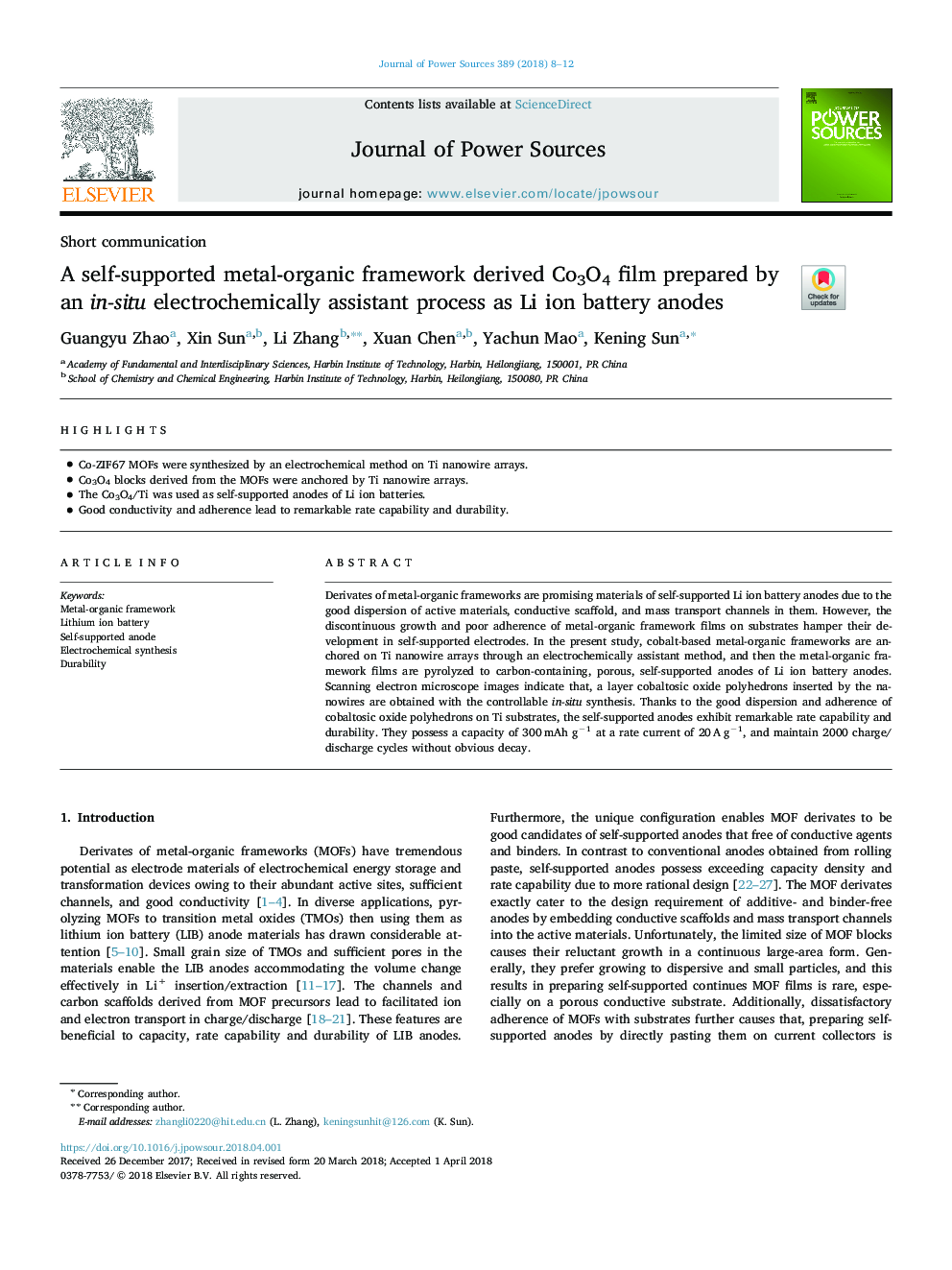| Article ID | Journal | Published Year | Pages | File Type |
|---|---|---|---|---|
| 7725136 | Journal of Power Sources | 2018 | 5 Pages |
Abstract
Derivates of metal-organic frameworks are promising materials of self-supported Li ion battery anodes due to the good dispersion of active materials, conductive scaffold, and mass transport channels in them. However, the discontinuous growth and poor adherence of metal-organic framework films on substrates hamper their development in self-supported electrodes. In the present study, cobalt-based metal-organic frameworks are anchored on Ti nanowire arrays through an electrochemically assistant method, and then the metal-organic framework films are pyrolyzed to carbon-containing, porous, self-supported anodes of Li ion battery anodes. Scanning electron microscope images indicate that, a layer cobaltosic oxide polyhedrons inserted by the nanowires are obtained with the controllable in-situ synthesis. Thanks to the good dispersion and adherence of cobaltosic oxide polyhedrons on Ti substrates, the self-supported anodes exhibit remarkable rate capability and durability. They possess a capacity of 300â¯mAh gâ1 at a rate current of 20â¯Aâ¯gâ1, and maintain 2000 charge/discharge cycles without obvious decay.
Related Topics
Physical Sciences and Engineering
Chemistry
Electrochemistry
Authors
Guangyu Zhao, Xin Sun, Li Zhang, Xuan Chen, Yachun Mao, Kening Sun,
